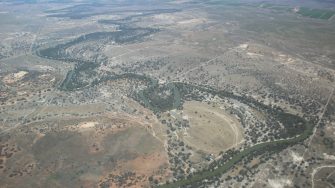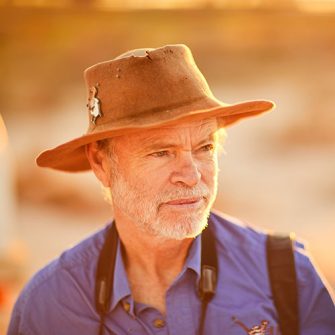
Date: Tuesday October 24th 2023
Project: Eastern Australian Waterbird Survey
Observers: Richard Kingsford (UNSW), Heath Dunstan (Vic GMA)
Trainee: Kurt Murphy (Vic GMA)
Pilot: Thomas Clark
We left Broken Hill to finish off the southern part of the Menindee Lakes. First up was Lake Menindee. It was fully flooded but did not have large numbers of waterbirds.
Copi Hollow, one of the small lakes in the Menindee Lakes system has this channel which connects it to Menindee Lakes, filling the lake.
From there we moved on to Lake Cawndilla. It had many more waterbirds which is unusual.
Lake Cawndilla had hundreds of pelicans, comorants and coot.
There were also hundreds of ducks on Lake Cawndilla.
We also surveyed Emu Lake which is in Kinchega National Park and it was drying right back. The shallow water attracted lots of Pink-eared Ducks and Great Teal.
Surveying Emu Lake
It was then onto the Darling/Baaka River which was reasonably low and had very few waterbirds.
Surveying the Darling/Baaka River
Then we flew over Tandou Lake, once a wetland, then a cotton farm before its water was bought by the Australian Government. The dry channels are what’s left of this massive irrigation enterprise.
Tandou Lake
Once we had finished Menindee Lakes, we headed south to the Darling Anabranch Lakes. Most of these were flooded and quite a sight. There were hundreds of ducks, pelicans and cormorants. Overall the diversity was very high.
One of the Darling Anabranch Lakes, south of Menindee
Surveying one of the large flocks of fishing pelicans and cormorants
The shallow water allows the piscivores to feed right across the drying lakes. There were also lots of Pied and Great Cormorants nesting.
It had been a long morning.
We then headed south flying over the Darling/Baaka River before landing in Mildura to refuel. Once we'd finished and had something to eat, we then flew along Survey Band 3 towards the Lowbidgee floodplain on the Murrumbidgee River. There were a few salt Lakes around Mildura with more waterbirds than usual.
The River Murray seldom supports many waterbirds
The lakes around Euston were next, but they are deep and permanently flooded thus not good habitat for waterbirds.
Then it was on to the Lowbidgee floodplain where there were hundreds of cormorants, pelicans and egrets. The flooding from last year was mostly gone, but still substantial in some places, with reasonable numbers of waterbirds.
The big freshwater Yanga Lake supported very few waterbirds
The floodplains of Gayini wetlands were drying right back, with some environmental flows still flooding areas.
We then headed towards the Murrumbidgee River, with its few cormorants and egrets. We went from side to side across the Murrumbidgee River, surveying large storage dams, which seldom have many waterbirds.
We finished the day in Griffith.

